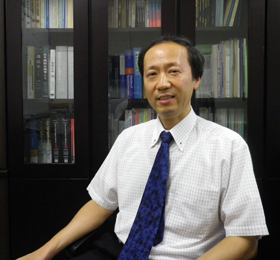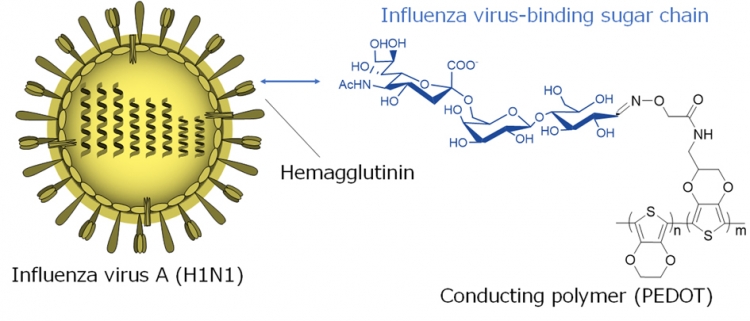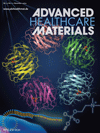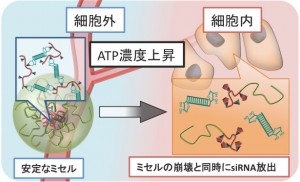Welcome!

An interdisciplinary area on nanobio-engineering is explored and developed by integrating materials science, chemistry, biology, and medicine. Novel biocompatible materials and functional bio-devices are used for regenerative medicine, cell therapy, minimum-invasive surgery and clinical diagnostics. In the group of Yuji Miyahara at TMDU, a direct interaction between biomolecules and carriers in semiconductor materials (electrons) has been investigated for developing novel label-free biosensors. For this purpose, we currently use an insulated gate field effect transistor (IGFET) in combination with organic functional membranes. FET is one of the most important and fundamental devices in the integrated circuit (IC). In the case of FET-biochemical sensors, species to be detected and its selectivity can be determined by the materials formed on the surface of the gate insulator. Previously, ion sensors, biosensors and oxygen sensor have been developed using polymer membranes, immobilized enzyme membranes and a solid electrolyte thin film, respectively. We have been investigating an electric detection of biomolecular recognition using a biologically coupled field effect transistor (bio-FET). The principle of bio-FET is based on potentiometric detection of changes in charge density that are induced at a gate insulator/solution interface by specific recognition of charged biomolecules. In this scheme, the charge variation upon specific binding is directly transduced into an electric signal by the field effect. Based on this principle, we have been developing functional bio-FETs as a new toolbox for biosensings and diagnostics. Our research activities can be categorized into the following research topics.
- Genetic analysis: Changes in the charge density of the gate as a result of DNA-DNA hybridization on a solid surface is transformed into potentiometric signal using an FET device. Single-base change could be detected using primer extension reaction on the gate of the FET. We successfully demonstrated single nucleotide polymorphism (SNP) detection and DNA sequencing using ISFET.
- Carbohydrate detection: Carbohydrate detection is based on affinity between phenylboronic acid and carbohydrate such as sialic acid. Self-assembled monolayer (SAM) of phenylboronic acid was formed on the surface of a gold thin film. Potential response of the gold thin film was dependent on the sialic acid density at the cell membrane.
- Lipid bilayer detection: Uniform lipid bilayer is formed on the surface of the insulator of a field effect device by vesicle fusion. Charges of head groups of lipids can be controlled and detected as a shift of electrical characteristics of the field effect device. Mechanism of signal generation has been proposed.
- Protein and peptide analyses: The surface of a gold electrode as an extended gate was chemically modified with SAM of alkanethiol with different termini. Potentiometric signal for adsorption of proteins on the SAM layer can be detected and investigated quantitatively. Specific recognition of protein is also possible using antibody and other capturing molecules.
- Cell-function analysis: Electrical phenomena at the cell membrane can be monitored by the use of ISFET. By culturing an oocyte on the surface of the gate, kinetics of transporter-substrate interaction at cell membrane can be monitored non-invasively. Difference of transporting ability among genotypes of transporter could be discriminated using cell-based FETs.
Hot Topics
#3, May 25, 2017
Researchers have developed a new, rapid biosensor for the early detection of even tiny concentrations of the human influenza A (H1N1) virus. Such early-stage diagnosis is crucial for averting a potential pandemic outbreak, as antiviral medication must be administered in a timely fashion. Conventional tests for detecting the flu virus are often slow and expensive, and can miss early viral infections. In contrast, the new biosensor measures tiny changes in voltage in an electrically conductive polymer to quickly detect virus concentrations almost 100 times smaller than the limit of currently available kits. The work was done at the Tokyo Medical and Dental University (TMDU), in a collaboration between the Institute of Biomaterials and Bioengineering and the Department of Molecular Virology.

Conductive polymers are a class of carbon-based molecules that conduct electricity, but can also be used in biological environments. They are very attractive materials for biosensor applications because researchers can easily attach biomolecules to the polymers, which allow them to bind with specific targets, such as flu viruses. In this study, poly(3,4-ethylenedioxythiophene) (PEDOT) was modified with a functional group that binds with the H1N1 human influenza virus, but not avian flu strains. "Conducting polymers have several advantages over inorganic counterparts,h explains corresponding author Yuji Miyahara. gThese include the ability to conduct both electrical and ionic carriers, mechanical flexibility, low cytotoxicity, low-cost production by casting or printing, and tunable properties via chemical synthesis or doping.h
To construct the biosensor, the polymer film was placed between two electrodes. When a solution containing H1N1, which carries a tiny positive charge on its exterior shell, was added, some of the viruses stuck to the polymer and increased the voltage measured by the electrodes. This electrical method allows the sensor to detect the presence of miniscule amounts of the virus. Viral loads are often measured in hemagglutination units (HAU). The new sensor can detect viral concentrations as small as 0.013 HAU. By comparison, commercially available kits that use immunochromatographic tests only work for concentrations greater than about 1.13 HAU. This represents an almost 100-fold increase in sensitivity. Study coauthor Shoji Yamaoka stressed the clinical applications of the device. gWe developed a conducting polymer-based sensor that can recognize a specific virus, which makes it a good candidate for wearable monitoring and point-of-care testing.h
The article, gSpecific Recognition of Human Influenza Virus with PEDOT Bearing Sialic Acid-Terminated Trisaccharidesh was published in ACS Applied Materials & Interfaces at DOI: 10.1021/acsami.7b02523
Links- Press Release by TMDU
- Press Release by EurekAlert
- Department of Molecular Virology, TMDU
- ImPACT Program by JST
#2, Sep. 16, 2014
#1, Feb. 4, 2013
For Students
We are looking for Master and Doctor students worldwide! Detail
- There is the JSPS Fellowship for Doctor students.

For Post Docs
- To join us, we strongly encourage Postdocs to acquire JSPS Research Fellowships for Young Scientists.
- We are looking for Scientists in: Materials Science, Microfluidics, Analytical Chemistry, Organic Chemistry, Electrochemistry, Biochemistry, Molecular Biology, Cell Biology, and MedicalScience.





